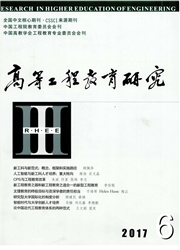

 中文摘要:
中文摘要:
本文利用引力模型(Gravity Model)描述我国央属高校本专科招生名额的跨省投放问题。文章从理论上推导出了引力模型的数学形式,而后利用2006~2010年全国高校招生数据对央属高校招生名额分配行为进行了实证研究。研究发现,各地考生数量的多寡、高校与各省份的距离远近会对高校招生名额分配产生显著影响。地方经济发展水平对不同地区、不同类型的央属高校招生名额分配行为产生的影响作用有较大差异。引力模型反映了高校招生名额分配模式的强大历史惯性。我国若仅通过减少央属高校的属地招生比例来试图平衡区域入学机会差距,可能难以达到预期效果。
 英文摘要:
英文摘要:
This article uses Gravity model to describe the allocation of national key universities~ cross-pro-vincial enrollment quota. It has derived a formula of Gravity model theoretically. Then, using the rel- evant data, it detects the allocation of national key universities' cross-provincial enrollment quota em-pirically. The results show that the number of examinees in a province and the distance between uni-versities and provinces are significant factors which influence the quota. The enrollment quota varies from region to region regarding their different economic development level. The Gravity model reflects the historical inertia of college enrollment quota allocation mode. If the government wants to balance the regional gap in college admission opportunity only by reducing the territorial enrollment ratio of national key universities, it will not achieve the desired effect.
 同期刊论文项目
同期刊论文项目
 同项目期刊论文
同项目期刊论文
 期刊信息
期刊信息
